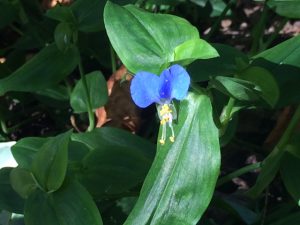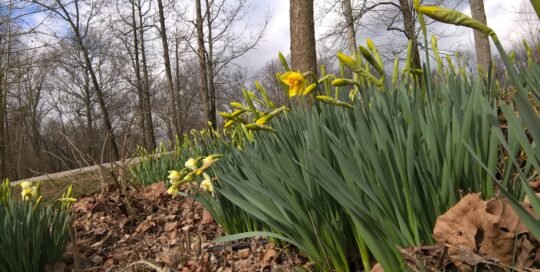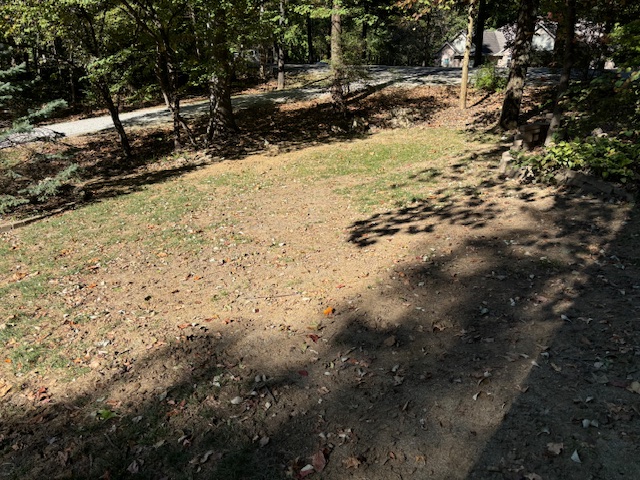Spiderwort and Its Many Uses in the Garden
Views: 3333

Volunteers are, sometimes at least, a pleasant surprise. Maybe the annuals planted last year re-seeded themselves? Maybe a bird dropped a seed and it sprouted? Who knows? This last growing season, other than the Japanese stiltgrass which has tried (and nearly succeeded) to take over our yard, spiderwort (Transdescantia) appeared in several beds. Spiderwort is a low-growing, trailing sort, the ones growing in our garden have ½ to ¾ inch flowers and are deep blue with bright yellow stamens. The flowers can be pale blue, deep blue, blue and white, violet, pink, white or rose colored, but you won’t see a yellow bloom on a spiderwort.
Spiderwort
According to Wikipedia, there are 75 spiderwort species native to the Americas. There are several spiderwort species native to the Eastern U.S.: T. occidentalis (Prairie spiderwort), T. virginiana (Virginia Spiderwort), T. ohiensis (Ohio spiderwort) and several more. If you’ve ever grown a houseplant called “Wandering Jew” (T. zebrina) or one called “Moses in the Cradle” (T. spathecea), our native Transdescantia will look a great deal like them, but green.
I’m honestly not certain what species decided to move into the gardens. Since each species hybridizes readily with the others, I may never be certain. After reading descriptions of four different species which are native to this area, “my” spiderwort doesn’t completely match any of them.
The First Peoples used Virginia spiderwort as food and medicine. The young leaves are edible. Mashed roots were made into a paste to use on itchy insect bites. A tea made from the roots was also used as a laxative and to treat stomachaches.
They will re-seed and apparently will also travel and sprout where the conditions are right. If you don’t want them to re-seed, dead-head the blooms. If you don’t want them at all, pull them out and make sure to dead-head the blooms. They can be aggressive, so stay on top of them. If all else fails, use glyphosate herbicide.
Since they are lovely, dainty little plants, beneficial to native pollinators and continue blooming from late spring to fall (at least here in Zone 6b), they are welcome to stay (at least in moderation).
Stay Green, Good Friends.
Meet Dona Bergman
Dona Bergman is a founding member, Southwest Indiana Chapter of the Indiana Native Plant & Wildlife Society, and an Advanced Master Gardener.







